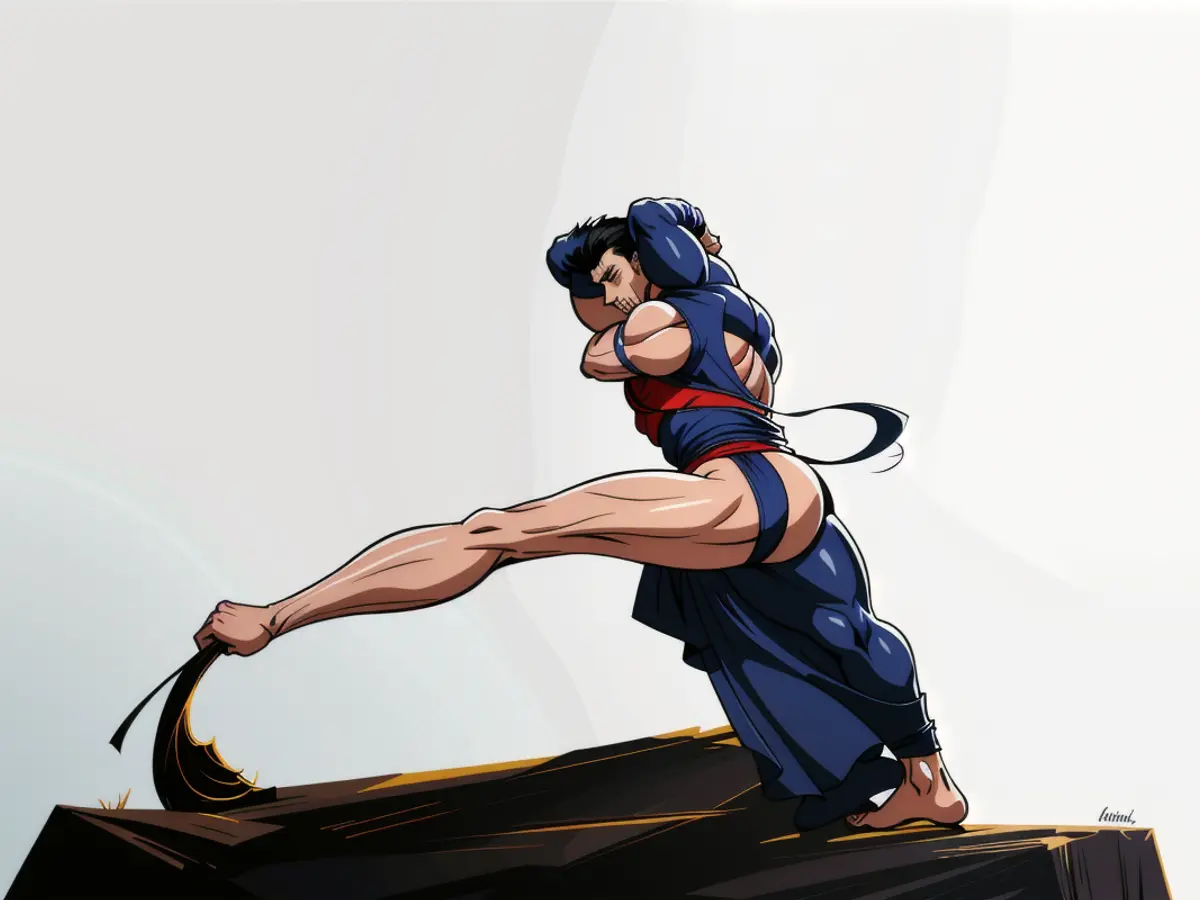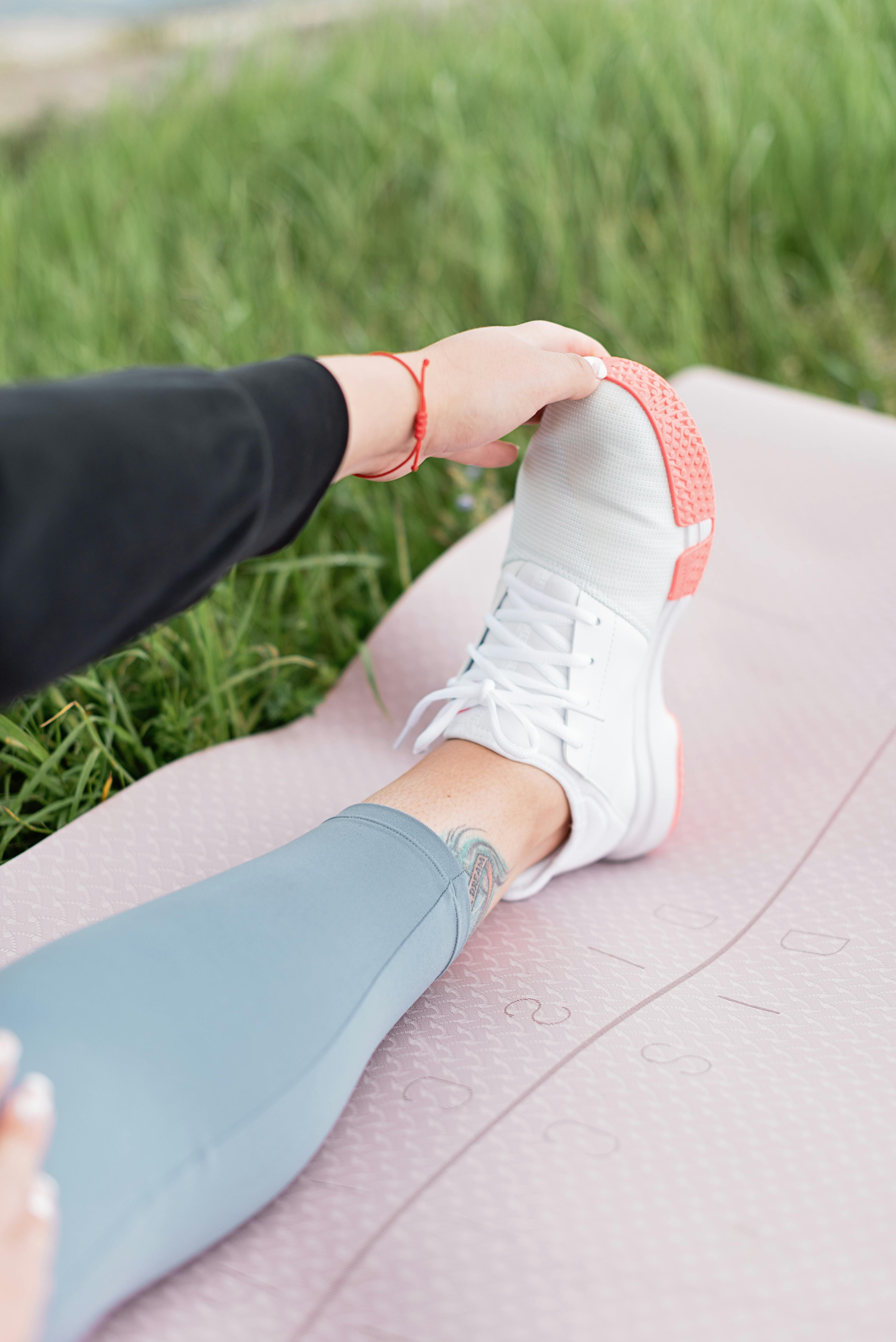Restricted Flexibility in Hamstrings: Possible Causes Identified
Struggling with tight hamstrings got you down? Let's dive into why they're aggravated and what you can do to ease that tension.
Feeling like your hamstrings are on fire after a workout? It's possible you've pushed too hard and overexerted them. This can happen during intense exercise or activities, leaving your legs feeling painful and stiff.
Still can't figure out what's going on? Here are some potential causes, along with easy ways to relieve those aching hammies.
What's causing that aggravation?
Overexertion at the gym (or anywhere else!)
Pushing yourself hard, especially during a new workout regimen, can easily cause tight hamstrings. Whether you tried that intense spin class for the first time or just gunned it on the treadmill, you might be feeling the burn.
Sitting on your keister all day
We know, we know - working from home or sitting in front of a screen zone all day can make you feel sedentary. But when you sit for long periods, your hammies become like rubber bands - they stretch and lose elasticity. So when you finally get up, expect some tightness.
Injuries
Tightness in your hamstrings can also stem from injuries. If you've had a past hamstring strain or tear, your muscles might always be susceptible to tightness.

Ready to make those hammies feel better? Here's how:
Hamstring stretches
Stretching it out is the perfect solution for tight hamstrings. Don't worry, these aren't complicated - even touching your toes can offer some relief. Ready to get started? Check out these simple hamstring stretches you can do daily. Remember, stop if you feel any sharp pain.
Supine Hamstring Stretch
- Lie on your back with legs out straight.
- Bend the left leg slightly and place your hands on the back of your left thigh.
- Slowly straighten the left leg, pulling it towards you and flexing your heel upwards. Stop when you feel the stretch in the back of your thigh.
- Hold for 30 seconds. Slowly lower and repeat on the other side.
Standing Hamstring Stretch
- Stand and place your right foot in front of you on its heel.
- Bend your left knee slightly, keeping your back straight. Hold onto your right thigh for balance.
- Lean forward, feeling the stretch in your right hamstring.
- Hold for 10-30 seconds. Come back up to a standing position, then repeat on the other side.
Seated Hamstring Stretch
- Sit with your right leg straight while bending your left leg, placing the foot on your inner right thigh.
- Lean forward at the waist, reaching for the toes on your right foot. Only go as far as you feel the stretch in your hamstring, avoiding any pain.
- Hold for 10-30 seconds and repeat on the other side.

Foam Rolling
If you're uncertain, just roll it out! Using a foam roller can loosen and stretch your muscles. Most gyms have one, but you can also grab your own.
How to do it
- Sit on the ground with the foam roller under your right thigh. Keep your left foot on the ground for support.
- Place your arms behind you, then roll out the back of your right thigh from butt to knee.
- Engage your core to keep your spine straight while rolling.
- Roll up and down for about 30-2 minutes. Repeat on the opposite leg.
Stick to this routine at least 3 times a week for some much-needed relief.
Heat or Ice Therapy
Don't forget about the power of heat or cold. Applying a hot or cold pack to the area can help reduce swelling and pain. Taking a warm bath can also be a relaxing way to unwind and soothe stiff muscles.
Over-the-Counter (OTC) Pain Relief
Aspirin, ibuprofen, and other OTC pain relievers can help alleviate pain while your muscles heal. Topical pain relievers, like Icy Hot, might also offer some relief.

Massage Therapy
Chronic hamstring tightness might be eased through massage therapy. A licensed massage therapist can target the necessary muscles and soft tissues to provide relief, stress reduction, and pain reduction.
Physical Therapy
If your tight hamstrings persist despite stretching and foam rolling, physical therapy can help. A physical therapist can examine for underlying issues like injuries or repetitive movements and guide you through specialized exercises or techniques to address tightness.
Injuries can range from mild strains to severe tears. If you suspect your muscle is torn, it's essential to seek medical advice from a healthcare professional.
Keep Those Hamstrings Loose
Stretch Regularly
Stretching out your muscles regularly can lower the risk of tight hamstrings. Aim to stretch during your warmup and cooldown sessions, dedicating about 3-5 minutes to these sessions.
Practice Yoga

Embrace relaxation with yoga, which can decrease tension in the hamstrings and reduce the chances of injuries. Begin by attending a class or trying poses like Downward Dog, Extended Triangle Pose, Standing Forward Bend, Standing Wide-Legged Forward Bend, and Seated Forward Fold.
Keep Your Leg Muscles Strong
Strengthen the leg muscles to reduce the risk of future tightness. Focus on exercises like squats, hamstring curls, calf raises, lunges, and deadlifts.
Move Your Body
Take breaks from sitting for long periods by practicing light exercises like stretches, jumping jacks, or taking a short walk. Even doing a few minutes of exercise throughout the day can help reduce muscle tension.
When to Seek Help for Overly Tight Hamstrings
Persistent tightness can usually be treated at home with stretching, but if it's chronic or affects daily activities, consult a healthcare provider or physical therapist. If tightness comes with other symptoms like intense pain, muscle weakness, trouble walking or standing, swelling or tenderness, bruising, or discoloration, it's best to speak with a medical professional. These symptoms may indicate an injury or underlying issue, especially if you've recently experienced an accident or fall.
The Takeaway
You can often treat tight hamstrings at home with stretching, exercise, heat/cold therapy, and OTC pain relievers. Injured hamstrings might require rest to heal. If your tightness persists or is accompanied by pain, seek advice from a healthcare professional who may also refer you to a physical therapist.
- Overexerting oneself during intense exercise or workouts can lead to tight hamstrings, causing discomfort and pain.
- Sitting for prolonged periods can contribute to tight hamstrings, as the muscles lose elasticity and become like rubber bands.
- Injuries, such as past hamstring strains or tears, can result in persistent tightness in the hamstrings.
- To alleviate tight hamstrings, engage in regular stretching, particularly hamstring stretches like the Supine Hamstring Stretch, Standing Hamstring Stretch, and Seated Hamstring Stretch.
- Additionally, incorporate foam rolling into your routine, over-the-counter pain relief, heat or ice therapy, massage therapy, and physical therapy if needed to manage and ease tight hamstrings.




